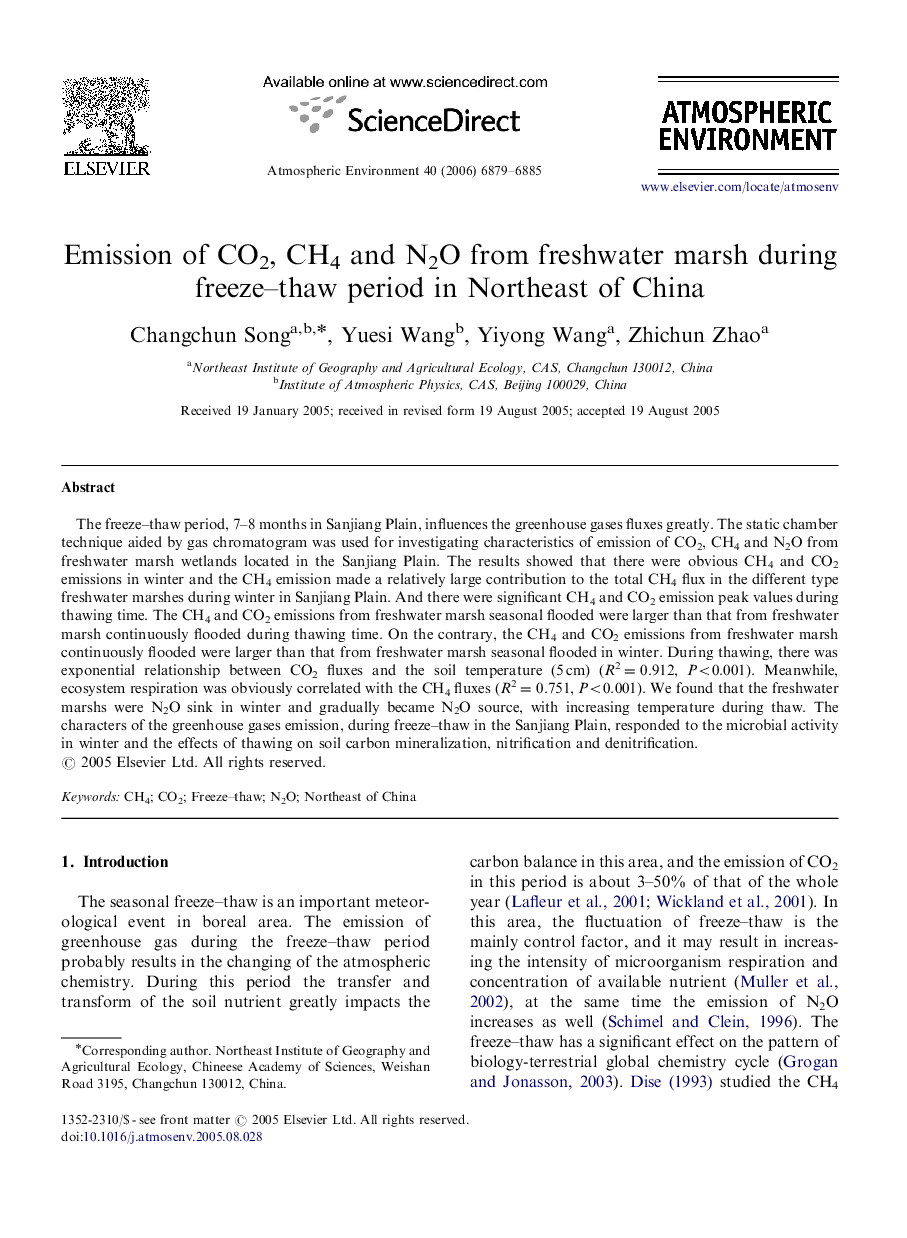| Article ID | Journal | Published Year | Pages | File Type |
|---|---|---|---|---|
| 4443879 | Atmospheric Environment | 2006 | 7 Pages |
The freeze–thaw period, 7–8 months in Sanjiang Plain, influences the greenhouse gases fluxes greatly. The static chamber technique aided by gas chromatogram was used for investigating characteristics of emission of CO2, CH4 and N2O from freshwater marsh wetlands located in the Sanjiang Plain. The results showed that there were obvious CH4 and CO2 emissions in winter and the CH4 emission made a relatively large contribution to the total CH4 flux in the different type freshwater marshes during winter in Sanjiang Plain. And there were significant CH4 and CO2 emission peak values during thawing time. The CH4 and CO2 emissions from freshwater marsh seasonal flooded were larger than that from freshwater marsh continuously flooded during thawing time. On the contrary, the CH4 and CO2 emissions from freshwater marsh continuously flooded were larger than that from freshwater marsh seasonal flooded in winter. During thawing, there was exponential relationship between CO2 fluxes and the soil temperature (5 cm) (R2=0.912, P<0.001). Meanwhile, ecosystem respiration was obviously correlated with the CH4 fluxes (R2=0.751, P<0.001). We found that the freshwater marshs were N2O sink in winter and gradually became N2O source, with increasing temperature during thaw. The characters of the greenhouse gases emission, during freeze–thaw in the Sanjiang Plain, responded to the microbial activity in winter and the effects of thawing on soil carbon mineralization, nitrification and denitrification.
